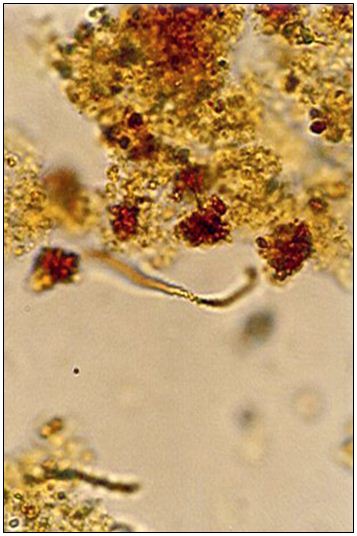 Better described as iron biofouling, the problem popularly known as “iron bacteria” is both complex and widespread. It is a natural phenomenon – microorganisms interacting with metals and minerals in their environments. Iron biofouling affects wells and water systems around the world in all sorts of aquifer environments: contaminated, pristine and climates arctic to tropical. In some places it causes great damage, in others it is considered a minor nuisance.
Better described as iron biofouling, the problem popularly known as “iron bacteria” is both complex and widespread. It is a natural phenomenon – microorganisms interacting with metals and minerals in their environments. Iron biofouling affects wells and water systems around the world in all sorts of aquifer environments: contaminated, pristine and climates arctic to tropical. In some places it causes great damage, in others it is considered a minor nuisance.
“Iron bacteria” is one type of biofouling among several, including the characteristic white sulfur slime of sulfur springs. Manganese, and even aluminum biofouling is also found in ground water systems.
Iron and other biofouling consists of biofilms which include living and dead bacteria, their sheaths, stalks, secretions and other leavings, and embedded metal oxihydroxide particles.
Bacterial iron can usually (but not always) be distinguishable visually from purely mineral iron incrustation by its soft, feathery or slimy appearance, and microscopically by the presence of bacterial structures and distinct mineral types. Under the microscope you can see the long, thin filaments or twisting stalks of various types by which microbiologists name the “iron bacteria”. Iron particles are often incrusted on the bacterial structures. However, the bacteria present consist of many types, and the classic looking filaments and stalks in the textbooks may be entirely absent. These biofilms are natural and usually harmless. Natural iron biofouling often acts as a preliminary iron filter in wells and therefore can serve a positive function as well.
Biofouling can be a nuisance. Mineral iron encrustation without the involvement of bacteria is rare in normal ground water environments. Generally, iron biofouling is the cause of iron build up in wells and pipes.
Bacterial iron may build up quickly compared to mineral incrustation. In addition to causing problems in wells, the bacteria may colonize tanks and water treatment devices, as well as spring outfalls.
Iron biofouling generally causes side effects such as slight and intermittent sulfide odor, breakthroughs of red water, and pitting type corrosion of iron and steel.
Do I have a ‘iron bacteria’ problem?
Some or all of these symptons may be present and indicate slime or Iron Related Bacteria (IRB) problems.
- Pump output (specific capacity) may decrease rapidly.
- Pump and pump column will be coated with a thick layer of slippery slimy gel like deposits. This will usually be red or orange in colour.
- When the slime is dry, it tends to become a fine powdery mass. Some varieties with older deposits will leave a hard thick layer.
- Rapid onset of a strong unpleasant smell from the well.
- Rotten eggs odor, may indicate growths in the well.
- Red slime on the primary filters deposited by decaying bacteria.
- Down hole video footage (using a camera like R-CAM 1000) shows slimy or stringy growths on the inside of casing or screen.
If you have noticed any of the problems listed above, please contact us and we will try and advise the best possible treatment product for your problem.
Examples of iron bacteria on pumps and pipe, click here to view our galleries for some further examples of iron bacteria biofouling.